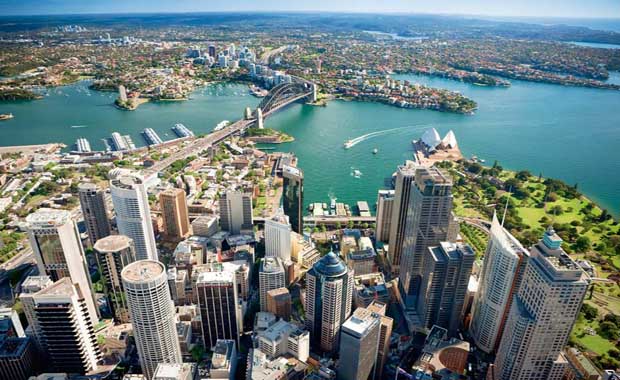The office market is running hot in some cities . . .
The services sector is becoming more important to Australia’s economic wellbeing – and that’s ramping up the office market in the two biggest cities.
Knight Frank Australia spokesman John Preece says the services sector was the largest contributor to employment growth last year. Services employment growth was 3.9 per cent year on year on a rolling annual basis as at February 2016, surpassing the 10-year moving average of 2.7 per cent a year.
The shift was highlighted in the minutes from the July meeting of the Reserve Bank of Australia (RBA), which noted that the economy was actually transitioning from mining to non-mining.
GDP growth by industry sector

Tenant demand grows in Sydney
Mr Preece says this strong employment growth has been driving tenant demand in the services-oriented capital cities, particularly Sydney.
This has been underpinned by the finance and banking sectors, IT companies and co-working start-ups chasing premium space in the CBD. In the 12 months to January 2016, tenants soaked up 157,150 square metres of Sydney CBD office space.
That’s good news for investors with property holdings in Sydney and Melbourne but not so great if you are hunting for opportunities in those cities.
“While demand continues to build momentum, the net supply over the next four years is expected to decline substantially due to the significant withdrawal of stock for residential conversion and the construction of the new Sydney Metro stations,” Mr Preece says in the Sydney CBD Development Tracker Q3 2016.
“Our estimates indicate that up to 362,000 square metres of office space will be withdrawn from the market permanently over the next four years, with most of these withdrawals in 2017 and 2018.”
Net CBD demand in the six months to January 2016

More pressure
Mr Preece adds that this will result in significant tenant displacement and put further pressure on an already tight market. It will also swing the balance of power to negotiate on prices towards landlords.
“We expect the current vacancy rate of 6.3 per cent in the Sydney CBD to fall significantly when the next Property Council of Australia figures are announced on August 4, to circa 4.5 per cent,” he says.
The Property Council of Australia’s Office Market Report for the six months to January 2016 bears out the tightening market.
It shows the Sydney CBD office market experienced its strongest demand in a decade.
The report says Sydney’s office market had the lowest vacancy rate and the strongest demand of all capital cities.
“Demand for offices in Sydney and Melbourne is roaring along – and that is good news for Australia as we face the end of the mining investment boom,” Property Council Chief Executive Ken Morrison says.
“But the story is not even. Office vacancies in Brisbane, Perth, Canberra, Adelaide and Darwin are more than double that of Sydney.
“The report also shows that Sydney, Brisbane and Adelaide will all have above average increases in new office stock over the next year.”
Services dominate employment growth

Different markets, different challenges
The vacancy spread between Sydney at the tighter end of the vacancy spectrum and Perth at 24.6 per cent at the weaker end is unprecedented and accurately reflects the divergence across CBD office markets, JLL’s Head of Capital Markets Research Australia, Andrew Ballantyne, says.
“The sharp divergence in office market conditions makes it more challenging for organisations to navigate a pathway through lease negotiation in different markets,” he says.




